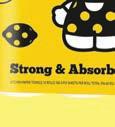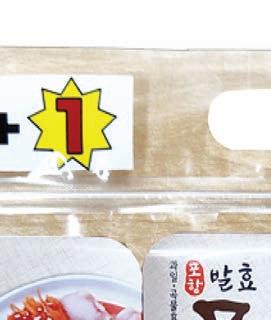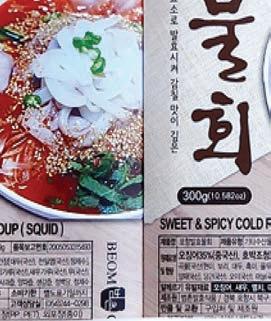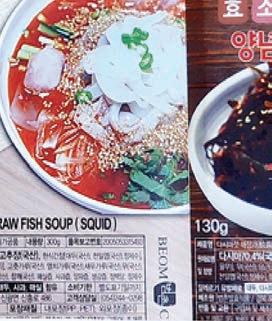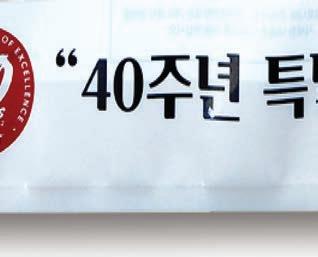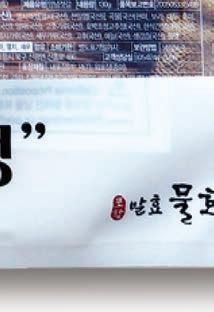
“미국에서 자라나는 청소년들
에게 우리 한국의 역사와 문화, 인 물을 공부하게 하여 한국에 대한
올바른 인식과 자긍심을 갖게 함
으로써 한인으로서의 정체성을 더
크게 길러주자”
대뉴욕지구 경기여고동창회
(회장 강용진) 산하, 경운장학회
■ 3등상-3
(회장 곽인영)는 2025년 5월 3일 (토) 오후 1시(미 동부시간) 맨해 튼에 있는 코리아 소사이어티에서 제15회 영어웅변대회를 화상 및
대면 하이브리드(hybrid)로 개최 했다. 올해 주제는‘내가 경험한 한국문화(Korean Culture: My Experience)’였다.
참가 대상은 미 전역에 거주하 는 9학년부터 12학년의 한국계, 미 국인 또는 다민족 고등학생으로 신분에 관계없이 누구나 참여할 수 있었다. 참가희망자는‘내가 경 험한 한국문화’를 주제로 영어 글 자수 1,400자 내, 웅변길이는 4-6 분의 원고를 작성하여 경운장학회 로 보내면 경운장학회는 원고를 심사하여 결선 진출자를 선정하 고, 결선 진출자들은 장학회가 진 행하는 스피치 워크샵을 통해 스 피치 코칭을 받은 후, 5월 3일 본선 에서 경합했다. 이번 대회에는 미 전역에서 9학년부터 12학년의 한 국계와 비한국계 고등학생 70여
명이 원고를 제출, 13명이 결선에 진출했다. 경운장학회 관계자들은 “대회를 거듭할수룩 한국에 대해 올바를 인식을 갖게하는 등 교육 적 효과가 크다. 우리 학생들이 학 교에서 배우지 못하는 한국의 역 사, 문화, 상황, 인물, 디아스포라 (전 세계에 진출해 살고 있는 한인 들)을 스스로 공부하는 과정에서 한국에 대한 자긍심이 커지는 등 웅변대회의 효과와
for centuries.
EmbracingJeong(정을 품으며)
ChloeKim[NorthernValleyRegionalHSatDemarest, NJ]
In elementary school, a conversation came up about everyone’s middle names. I heard others confidently reply with names like ‘Elizabeth’ or ‘Mary,’ but mine felt like a secret to keep. When it became my turn to reveal my middle name, I hesitated before whispering, ‘Seohyun.’ All eyes were on me and the questions started— how do you to pronounce it, what does it mean, why were you given that name. These questions were asked out of curiosity, but to me, these questions were a reminder that I wasn’t the same as everyone else. These small, insignificant moments were the reason that I became aware of the subtle differences between myself and my peers that would have gone unnoticed by others. Over time, these small moments that I once dreaded turned into reminders of who I am and the culture I come from. Through my experiences, I came to understand the values of jeong that are deeply embedded in my life and Korean culture.
At a young age, I noticed a gap that set me apart from others. Translating simple sentences for my parents, bringing homemade Korean meals to school, and explaining why shoes weren’t allowed inside our house made me feel like an outsider knowing that others did not have the same struggles. While my classmates celebrated holidays with extravagant parties, my family’s celebrations were quiet and intimate, centered around a meal prepared with care rather than a grand event. Back then, I envied those who were like the majority. I wished to blend in by having those same big parties and parents who could easily speak English.
But over time, I began to view these experiences with a different lens. Moments that used to make me feel ashamed became events that celebrated my culture. These were not reminders of my differences, but reminders of where I came from. My name, my language, the quiet ways we celebrated was part of my identity. One of the first places where I noticed this shift was at the dinner table. Growing up, meals in my household seemed nothing more than a routine, but as I grew older and became more mature, I came to understand that food is an expression of love, care, and tradition.
My parents, who moved across the world to provide for me and my siblings, rarely expressed
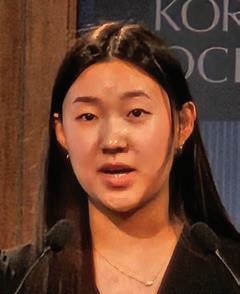
their love in obvious ways but they expressed their love through our everyday meals that they prepared by themselves. At first, I found it embarrassing to be eating meals with smells that would not be appealing to
the example of a grandma giving their grandchildren plates and plates of food until they are full to the point they might burst. This is a special and unspoken bond only certain people have the luxury to understand that goes beyond only love. This concept is deeply engraved in Korean culture and affects the way that Koreans interact with each other. Others might find such gestures overwhelming or burdensome but in Korean traditions, it’s an expression of deep care and desire to put the needs of others before their own. Jeong is a feeling that is built in every gesture, every meal, and interaction. It is a silent language that can be understood by the heart.
After observing the values that I observed in my family, I realized it extended far beyond the household. Korean culture has a strong emphasis on community and can be seen in everyday interactions. A strong example of this is the use of honorifics in Korean which demonstrates respect for elders. This goes back to the Silla Dynasty where there was a hierarchical system known as

“…Myname, mylanguage, thequietwayswecelebratedwaspartofmyidentity. OneofthefirstplaceswhereInoticedthisshiftwasatthe dinnertable. Growingup, mealsinmyhouseholdseemednothingmorethanaroutine, butasIgrewolderandbecamemoremature, I cametounderstandthatfoodisanexpressionoflove, care, andtradition…”
many but I came to realize that each dish was a demonstration of their affection. Their small and natural actions of placing banchan(반찬) on my spoon or giving me sips of their soup to see if the gan(간) was just right, were significant gestures that I had slowly understand over time. I saw them as not just as acts of love, but as symbols of our cultural heritage. It was moments like these that helped me understand the meaning of jeong(정), a unique Korean concept that cannot be directly translated into English. According to “KnowingKorea,” jeong is “intimate and warm feelings arising from one’s relationship with another person, and the desire to do something for them.” They use
the “bone order.” In the most known Joseon Dynasty (1392-1897), they had a hereditary status system based on Confucian ideals where they were divided by royalty, nobility, commoners (farmers, artisans, blacksmiths, and merchants), slaves (personal or public) and outcasts (such as butchers) according to Seo-young Chae. In the modern day, it is much more simplified. For example, younger people address teachers and elders with titles that show respect to their status. This is even exemplified in professional settings where different dynamics and relationships determine the way that people address each other. Both of these demonstrate the traditional Confucian ideals that have shaped Korean society
While some of these values do not only apply to Korea, the history and the way it was preserved is unique to Korean culture. Many East Asian cultures share similar ideals, but jeong is a concept special to Koreans and can be seen throughout their daily life. Other cultures express love through food, but the Korean dining experience—with its family dishes, shared side plates, and insistence on ensuring everyone is well-fed—embodies a specific kind of warmth and care that is difficult to replicate elsewhere. In fact, many Koreans often use the phrase “밥 먹 었어?” meaning did you eat? As a way to check in and show concern to the individual.
Despite Korea’s rapid modernization, these traditions remain deeply ingrained in society. The rise of globalization and Western influence has led to changes, but core values such as jeong and collectivism are present nonetheless. The popularity of Hallyu (the Korean Wave) has introduced elements of Korean culture to the world, from K-dramas to K-pop, but even with the global spread of pop culture, the same fundamental principles of familial bonds, respect, and shared identity is consistent in Korea. In Korean media, themes of deep friendships, familial sacrifice, and emotional connections frequently appear, reflecting the enduring presence of these values.
For me, embracing these traditions has been a journey of accepting my identity. What I once saw as differences that set me apart from my peers, are now strengths that define me and my purpose. I have learned to appreciate the small acts of love that define Korean culture with the way my parents show affection through the various dishes that they make for dinner or the way my grandparents always insist on giving me more food until I physically cannot handle it. These traditions and small acts are a constant reminder of the deep bonds that tie us together, shaping not just my personal experiences, but the Korean society as a whole.
The value of jeong is deeply embedded in Korean culture and is an important part of shaping identities and society. Through my various experiences, I have learned and come to understand the concept of this deep and unspoken affection that can be expressed in many different ways. Korean society as a whole is influenced by this concept that has been around for centuries which reflects a larger spirit that extends beyond households. As we reflect on our own lives, it is important to understand and catch these small but meaningful actions and also practice jeong whether it is done personally or professionally can help create a deeper connection with others and the world.


노년기 생활비(RetirementIncome)를 보조한다(Supplement)
◆ 노후생활 기반 미리 준비해
야
미국에서 매년 세금보고를 한
사람들은 62세부터 사회보장 은
퇴연금(SocialSecurity RetirementBenefit)을 신청하여
받을 수 있다. 사회보장 은퇴연금
의 액수는 사회보장 세금(Social SecurityTax)을 일생동안(특히
은퇴하기 전 10년 동안) 얼마나
냈는가에 따라 결정된다. 다시 말
해서, 얼마나 많은 수입을 보고 (IncomeTaxReturn)했는가에
달려있다.
메디케어(Medicare)는 65세
부터 받지만, 은퇴연금은 1960년
도 이후에 태어난 사람은 67세 (FullRetirementAge)부터 받을
수 있다. 출생 연도가 1943-1954
인 사람은 FullRetirementAge 가 66세이고, 1955~1959 인 사람은
66세 + 두달 씩 차이가 있다.
FullRetirementAge와 상관
없이 70세가 될 때까지 신청을 늦
게 할수록 연금 액수는 많아진다.
70세가 되면 더 이상 신청을 늦출 수 없다. 사회보장 은퇴연금은 한창 일
것만큼 충분한 액수가 아니다. 그래서 그것만 가지고는
재정적으로 여유 있는 노년기를 보낼 수가 없다. 그래서 한창 일
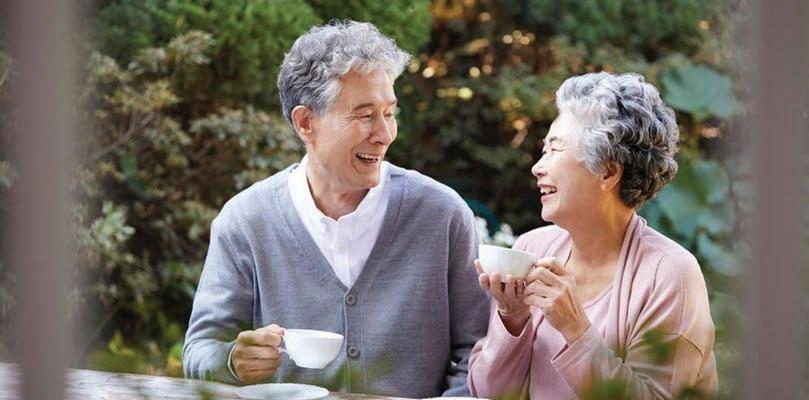
하는 젊은 시절에 번 수입의 일부 를 체계적으로 측적하는 수단이 필요한 것이다. 노년기의 생활비를 축적하는 수단은 개인적으로 가질 수 있는 IRA(IndividualRetirement Account), 회사의 직원으로서 가 질 수 있는 연금계획(Pension Plan, 401K, 등), 자영업자로서 가 질 수 있는 KeoghPlan, SEP등 여러 가지가 있으며, 세제상 특정 한 혜택이 있는 것(Qualified Plan)과 없는 것(Non-Qualified
Plan)으로 구분된다.
◆ 은퇴 후 30년 더 살 준비 요즈음은 인간의 평균수명이 길어진 관계로 과거에는 오래 살
았다고 생각되었던 나이 환갑이
되어도 잔치를 벌이기가 쑥스러 운 시대가 되었다. 그래서 불과 한 세대(30년) 전만 하더라도 은 퇴 이후 15년 정도 쓸 수 있는 기 금을 마련하면 된다고 생각했는 데, 요즈음은 30년 정도를 쓸 수 있는 기금을 마련해야 한다고 말 하고 있다. 은퇴이후 인간이 살 수 있는 기대수명(Life Expectancy)이 그만큼 길어진 때문이다. 따라서 젊었을 때 부지 런히 벌고, 옛날보다 2배 내지 3배 를 저축해야 늙어서 일할 수 없을 때 노년기를 안락하게 살 수 있다 는 계산이 나온다. 기대수명의 연장은 미국인들 의 생명보험 가운데 평생보험 (WholeLife)의 만기(Maturity) 가 100세에서 120세로 바뀐 사실 에서도 확인된다.

◆ 노후 생활비 대책 세워야 충분한 액수의 생명보험은, 특 히 저축성 생명보험은, 다목적 용 도로 쓰일 수 있다. 자녀들이 성 장하는 시기에는 가족의 생계비 를 보장하는 수단으로, 자녀들의 고등 교육비를 보장하는 수단으 로 쓰일 수 있고, 특히 저축성 생 명보험은 거기에 축적되는 현금 가치(CashValue)를 미구에 닥 치게 될 노년기의 생활비를 보조 하는 수단으로 활용할 수 있다.
저축성 생명보험은 자녀들의 양 육기간에는 예기치 않은 조기사 망(UnexpectedPremature Death)으로 인하여 닥칠지 모르 는 불확실성에 대비하고, 이러한 시기를 무난히 넘긴 후 노년기에 다다르면, 거기에 축적된 현금 가 치를 꺼내서 노년기의 생활비로

쓸 수 있게 된다는 이야기다. 그러나 생명보험은 그 크기가 노년기 생활기금을 충분히 축적 할 만큼 큰 계약서(Life InsurancePolicy)가 아니면 부차 적 수단(SubsidiaryMeans)으로 머물 수밖에 없다. 따라서 각자 처한 상황에 따라서 세제상 혜택 이 있는 IRA, 401K, KEOGH SEP, 등과 같은 플랜을 먼저 세우 는 것이 바람직하다. 특히 SEPIRA(Simplified EmployeePensionPlan)는 종업 원 수가 매우 적은 소기업(Small Businesses withfew orno employees)에 어울리는 플랜이 다. 종업원의 임금의 25% 또는 6 만9,000 달러 가운데 적은 액수를 고용주가 내주고, 고용주는 적립 금에 대해 세금 공제를 받고, 종 업원에게는 찾아 쓸 때까지 적립 금과 수익(Contributionsand Earnings)에 대한 세금을 연기 (Deferral) 해준다. ◆ 게인 은퇴 구좌 노동으로 번 수입(Earned Income)이 있는 사람은 누구든 지 손쉽게 시작할 수 있는 개인은 퇴구좌(IndividualRetirement Account=IRA)는 50세 미만은 1 인당 1년에 7천 달러 범위 내에서, 50세 이상은 8천 달러 범위 내에 서 각자 하고 싶은 액수만큼 적립 할 수 있다. 이 개인 은퇴구좌는 사회보장 제도(SocialSecuritySystems) 의 은퇴혜택(Retirement Benefits)을 개인적으로 보완하 도록 장려하는 데 목적이 있다. 따라서 여기에 적립하는 액수는 수입세의 공제(FederalIncome TaxDeduction) 또는 적립기간 동안 생기는 이익금에 대한 수입 세납부를 연기(TaxDeferral) 해 주는 세제상 혜택이 있다. 이 개인 은퇴구좌는 전통적 구 좌(TraditionalIRA)와 로스 구 좌(RothIRA) 두 가지가 있는데, 전자는 적립액수를 매년 수입에 서 공제(세금 절약)하고 60세 이 후 찾아 쓸 때 원금을 제외하고 적립기간 동안 불어난 액수




















